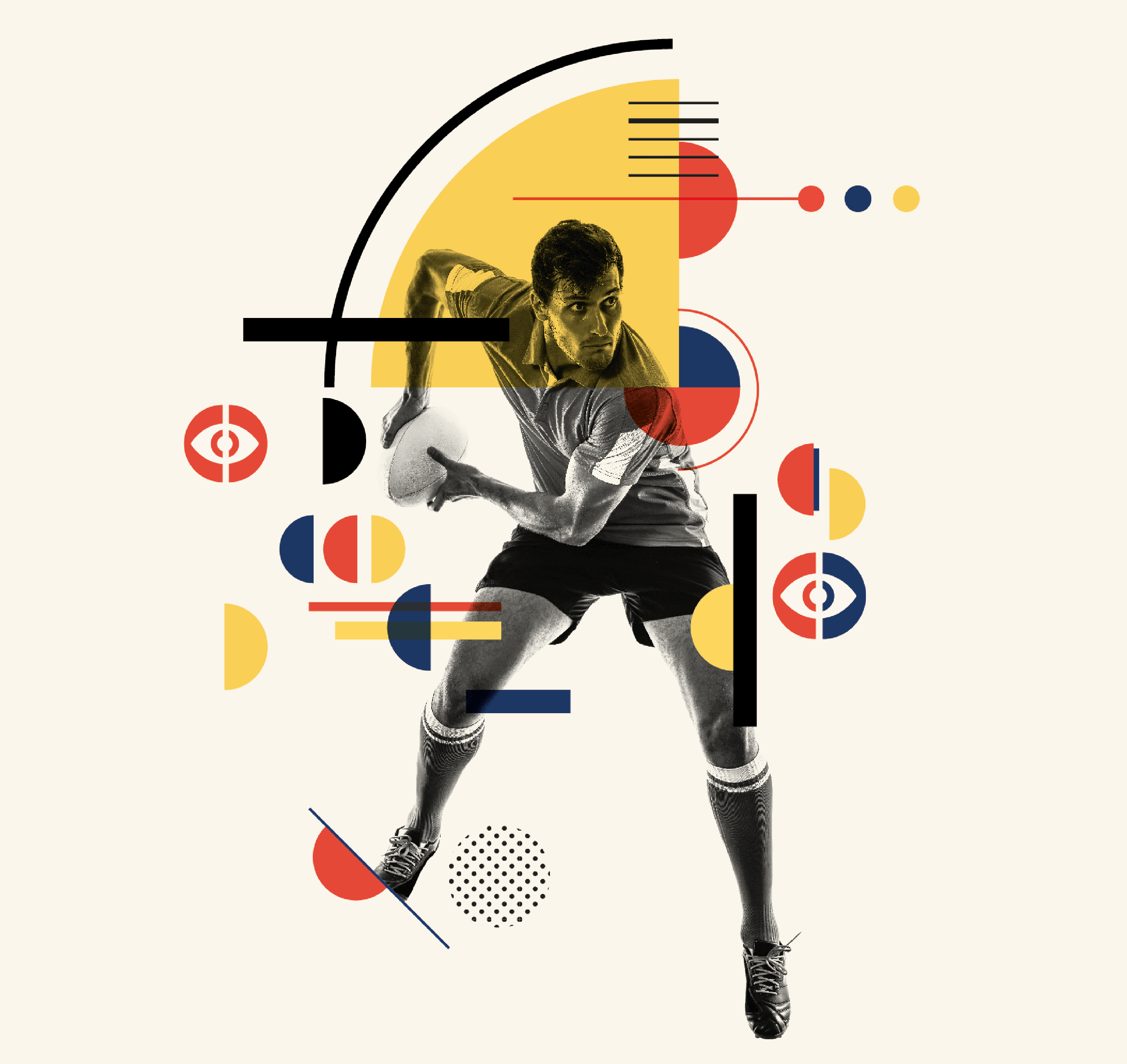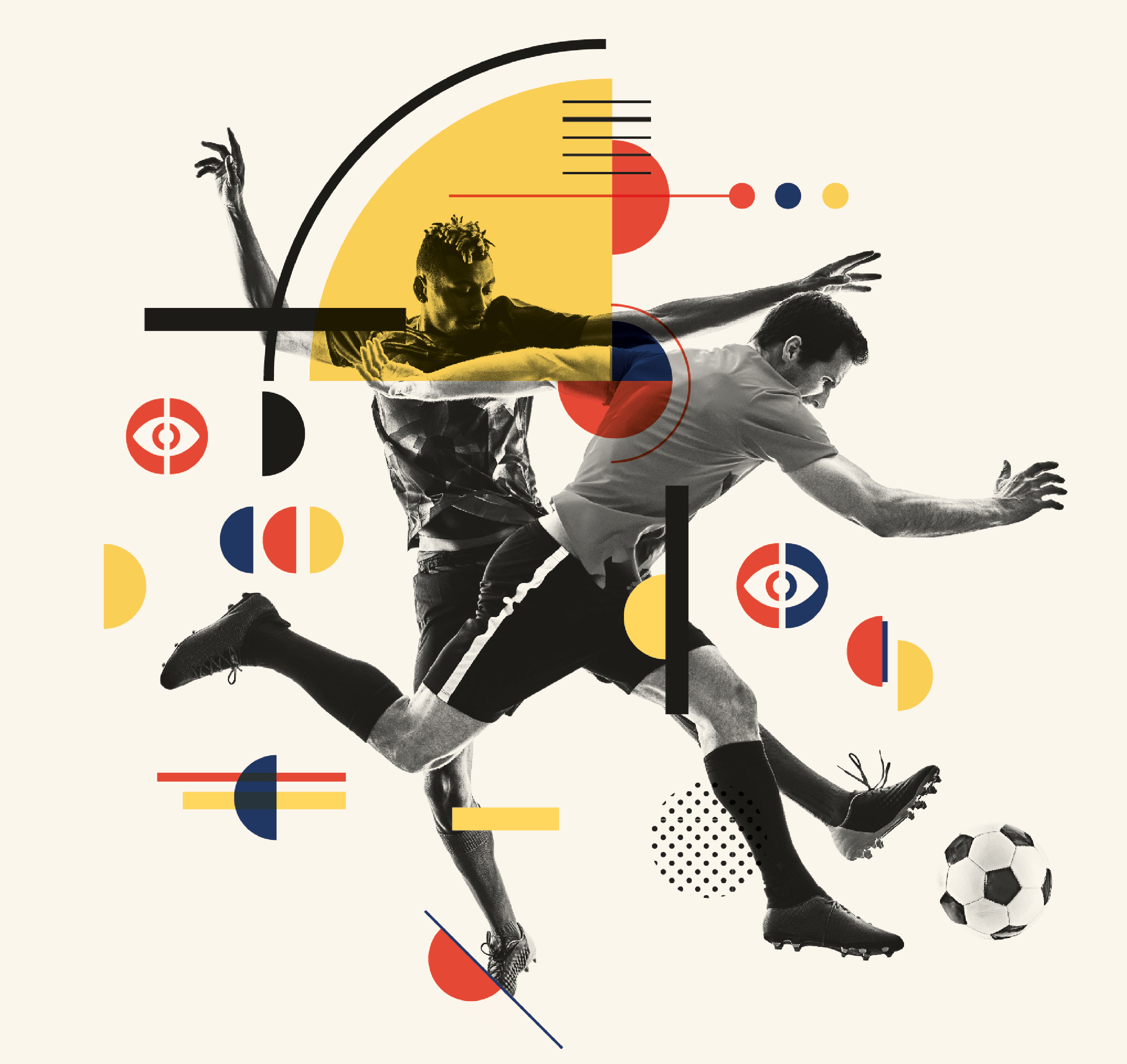
Almost all sporting events pose some risk to the eyes – a flying tennis ball here, a stray finger on a basketball shot block, and I don’t need to mention how boxing or other fighting sports can cause eye injuries – there are so many ways that our most precious organ can be damaged. This high risk of injury has led to the implementation of compulsory visors in the North American Ice Hockey top division, the National Hockey League (NHL), and an investigation into how visors would reduce injuries in the National Football League (NFL). Of course, there are plenty of contact sports where helmets are not included in the equipment list – and that makes visors a more complicated addition.
Rugby is one of these sports. On the rugby pitch, hands, feet, and even the ball can cause damage to eyes – but, at the same time, spectacles are prohibited because the physical nature of the sport makes them extremely dangerous to be worn on the field. However, there is now an answer to these woes. World Rugby have created – with my team’s help (1) – protective goggles that can include prescription lenses.
Eye-vis awareness
World Rugby recognized that the no-spectacles rule excluded potential participants who, for whatever reasons, weren’t able to wear contact lenses. The federation wanted to increase access to the sport, especially at a grassroots level, while better protecting players. Although sporting eye injuries are not common, they are often serious; wearing eye protection vastly diminishes the chance of an ocular injury.
There have been a few high-profile cases that have raised awareness of eye care in rugby. Irish rugby union player Ian McKinley – a major “poster boy” – was blinded in one eye after a studded boot hit his eye in a rugby game. He managed to return to professional rugby and even play internationally – thanks to a lot of hard work, as well as goggles to protect his functioning eye. Thankfully, such injuries are rare, but these incidents really highlight the importance of protecting sight. For McKinley and others like him, retiring would have been the only option without the protection of the goggles.
And so, with the two angles of participation and protection in mind, World Rugby decided to incorporate sports eyewear into the Laws of the Game. And it’s fair to say that the study my team conducted for the federation wasn’t within the realms of our usual work! Specifically, World Rugby asked for our optometric and optical expertise to assess the quality of the goggles. The remit fitted very nicely with my expertise – and it was a really great trial to work on.

Scouting report
The study was essentially a wearability trial. We wanted rugby players’ views and experiences of how successful the goggles were in helping them to access and play the sport without impeding sight. We also wanted to drill down into any emerging issues and whether they could be ameliorated in some way – for example, ease of cleaning, performance in different weather conditions. And, of course, we looked at the safety of the goggles in play.
Our main findings were positive: the goggles were a helpful addition. Notably, there were a large number of young people (up to 18 years old) using the goggles – likely a reflection of the lower likelihood of people under 18 being contact lens wearers but still wanting to play rugby.
But there were some challenges with the goggles – fogging being one key issue. Just like wearing a mask with glasses, it is annoying when fogging occurs! Given that rugby is played all across the world, different humidities and weather conditions will need to be taken into account. The comfort of the design was another concern – in particular, the thickness of padding and the pressure around the nose; the padding is required to ensure the actual goggles are not in contact with the player’s face, but resulted in some scrapes around the nose and face.
Both of these issues were highlighted in the paper and will need to be addressed by the manufacturer of the goggles.
Grand designs
World Rugby also asked me to evaluate the goggles in more detail; for example, how they would fit different face shapes and work with different optical prescriptions. As you can imagine, if someone is very short- or long-sighted, it will have significant implications for the optical insert placement. Indeed, I recommended the need for clearer instructions for the opticians and optometrists who would be glazing the optical inserts into place. Another key recommendation was the need for additional sizes – especially given that the goggles were also intended to increase participation. My family and I have been involved in community level rugby for some years – and I even played a bit at university, and it’s easy to see the benefits of the goggles for inclusion in sport.
Beyond rugby
I’m currently leading a project looking at classification of vision impairment relating to para-athletic sports. All international para-athletic sports are subject to criteria for physical and sensory impairment, so that athletes can be classified into appropriate participation groups.
At the moment, the highest international criteria to be visually impaired equate to having vision up to and including 6/60 (or those with visual field of less than 40 degrees, who may have acuity better than 6/60), so individuals have to be severely visually impaired to participate in para-athletic sports internationally. However, the classification does not take into account the type of disease, progression of disease, or the environmental conditions of a particular sport.
The International Paralympic Committee is aware of the challenges, and there is some progress in creating sport-specific criteria for vision, such as shooting, which incorporates contrast sensitivity. I am working with colleagues in the School of Sport with expertise in disability rights to investigate athletes’ experience of classification. For example, one major problem is that athletes can be treated with suspicion during their classification assessments. Classifiers are likely looking to catch intentional misrepresentation from cheating athletes who are trying to make their visual impairment worse than it really is; however, there is a great deal of discussion about how rare such cheating is and to what extent external factors (like pressure from coaches) might contribute to the problem. It’s a really contentious area.
If you’re looking at improving sporting participation for the visually impaired, suspicion over their level of sightedness is going to put a lot of people off. It’s something that needs to be addressed to increase involvement. And hopefully the work we’re doing will help with this and bring the athlete’s voice to the fore with regard to their experiences of classification.
Another challenge with the current system is the inflexibility in criteria, and the difficulties at the boundaries of classification levels. For example, I recently saw a patient who is registered as severely sight impaired and would like to take part in some sporting competitions. However, with the current classification system, they are borderline in terms of visual acuity between B1 and B2, but functionally should be in the B1 classification as they only manage to sometimes achieve a VA measure over the border into the B2 classification if given significant time to evaluate the chart.

References
- JA Little et al., “Eyewear for Rugby Union: Wearer Characteristics and Experience with Rugby Goggles,” Int J Sports Med, 41, 311 (2020). PMID: 31986547.
